Religion is said to be a collection of cultural systems, belief systems, and worldviews that relate humanity to spirituality and sometimes, to moral values. Religion is the royal highway that leads us to God. All great Masters and Prophets established several pathways to enable human beings to make a connection with and eventually realize their true Divine Self.
The only religion that Bhagawan preaches is that of Love. And He stresses again and again that Love is the essence of all the religions. No religion ever preaches violence. The medium that Bhagawan uses to teach us this religion is also Love. The subject is Love, the object is Love and the process is one of Love. That is why Bhagawan says, God is Love, Live in Love. Jesus declared, “Thou shalt love thy neighbour as thyself”. Love in Jainism is expressed through the four forms of public conduct: Kind acts without reward, Rejoice at the well being of others, Relieve suffering of others and Compassion for criminals.
Bhagawan Baba came amidst us in the physical form as an Avataar, not to establish any new religion; but to establish the unity of all religions. He preaches Love and Oneness as the basis of all religions and urges the Hindu to become a better Hindu, the Christian to become a better Christian, the Muslim to become a better Muslim, the Sikh to become a better Sikh and the Jew to become a better Jew. The need of the hour today is to have a correct understanding of religion and an appreciation of the underlying unity in all religions.
This theme of “Unity of Religions” is presented in 5 parts. Part-I is an introduction to Religion. In Part-II Bhagawan explains the reason for diversity in religions. Part-III deliberates on the principle of Oneness that is common to all religions. In Part-IV, Bhagawan expounds on the unique statement made by Him, ‘There is only one Religion; the Religion of Love”. In Part-V, Bhagawan appeals to all people not to criticize any religion and to respect all religions.
Part-IV of this theme focuses on the One Religion – The Religion of Love and on One God who is Omnipresent. The six audio extracts in this posting are taken from the Discourses delivered by Bhagawan in the years 1989, 1990, 1999 and 2001.
Clip-1 talks about how all the religions of the world advocate only peace. No religion preaches violence. Clip-2 reiterates that religions were meant only for the welfare of the society. In Clip-3 Bhagawan describes through various examples, how Love is the undercurrent of all religions. In Clip-4 Bhagawan expounds on the true Religion of Love. Clip-5 elaborates on the aspect of God being the very embodiment of Love and Omnipresence. Finally in Clip-6, Bhagawan explains how the same God pervades all names and forms.
Each audio clip has a name that adopts the following code: Serial number, Title appropriate to the key content, Duration of the clip, Year-Month-Date of the Clip. Below the title is the translation in English of the select excerpt of the Discourse, followed by the audio player. The post ends with a short quiz that would help you evaluate your assimilation of Bhagawan’s Message from these extracts.
Note: Those receiving this blog by email may see words bunched together due to a technical glitch. That is beyond my control. Please click on link at the top of the email to read the blog directly. Sorry about this. If anyone has a solution to this please help me out.
01-All Religions advocate Peace and not Violence-4.04-1989 July 23
The ancient Bharatiya religion, based on the Vedic culture, also referred to as the Hindu traditions, always prayed for universal peace “Lokaa Samastha Sukhino Bhavantu”. The objective of Islam religion is also the same. In Persian, the word “Islam” has many sacred meanings. One meaning of the word “Islam” is “surrender” and another meaning is “peace”. The inner meaning of this term is that man should surrender to God and live in peace with his fellow men. The holy book of Islam, the Quran, contains many sacred precepts. “Salaath” is one such precept. It enjoins one to worship God with steady faith. Another precept is “Zakaath”, which enjoins the believer to practise charity for relieving and protecting fellow-beings in need or in distress.
In the scriptures of the Bharatiyas, a similar duty has been laid down in the saying, given by Sage Vyasa, as the essence of all the eighteen Puranas. “Paropakaaraaya Punyaaya Paapaaya Parapeedanam” (It is meritorious to help others and it is sinful to cause harm to others). Help ever, Hurt never. It is by practising such sacred precepts that people professing different faiths lived in harmony. Truth, peace, love, forbearance and compassion were regarded as the five life-breaths of religion.“Hin” means “Himsa” (violence) and “Du” means “Distant”. Therefore the Hindu Nation means the ones who stay away from violence. Hin-Du – staying away from violence. Therefore we should not entertain any differences related to the religions of Christians, Muslims, Buddhists, Zoroastrians, Sikhs, or Parsis.
02-All Religions have propagated only the Welfare of Society-1.20-1990 December 25
 |
| All Religions preached for the welfare of society |
It is evident that all religions preached keeping in mind the well-being and safety of society. The well-being of society leads to the welfare of the world. The immortal drop of Truth-realisation (Self-realization) can be got only through society. But, unfortunately, society today is riddled with the poison of strife, chaos and conflict.
03-Love is the Undercurrent of all Religions-4.00-1999 February 14
 |
| Love is the undercurrent of every Religion |
He is a true Christian who cultivates the harvest of love in the field of his heart. A Christian should become an ideal Christian. That is, he must cultivate the harvest of love in the field of his heart. Only then can he be a true Christian. Next, who is a Sikh? A Sikh is not the one who wears a turban and carries a sword. One can be a true Sikh only if he cultivates the harvest of love in (the field of) his heart. Therefore, a true Sikh is the one who is full of love, who is the very form of love. Being a Sikh does not mean killing others and causing pain to others. Who are Hindus? It is the same with Hindus too. He is a true Hindu who cultivates the crop of love in (the field of) his heart. But this crop of love is not to be found anywhere. Even the seeds of love are not sown, then how can you get the crop of love? How can you call such a person devoid of love as a Hindu?
I told you then; ‘H’ stands for “Humanity”; ‘I’ stands for “Individuality”; ‘N’ for “Nationality”; ‘D’ for “Divinity” and ‘U’ for “Unity”. The one with these five qualities is a true Hindu. However, these five qualities are not seen in us. Then how can we call ourselves Hindus? The undercurrent of all these is Love. Without harvesting the crop of love, how can you call yourself a Hindu? A true Hindu must also be an embodiment of love.
Next is the Muslim. The Muslim too is one who has been able to harvest the crop of love. Muslim has another meaning. They call out, “Allah”. Allah means God. “Allah Ho Akbar”. Akbar means great. Therefore, God is Great! He is the greatest of all. What is the meaning of Islam? The one who leads a peaceful life can be said to belong to Islam. When can you get this peace? Only when the heart is full of love, can you be peaceful. Without love, you can never get peace.
Therefore, in every caste, in every religion, in every person, the heart must be full of Love.
04-There is only one Religion-The Religion of Love-1.37-2001 November 21
 |
There is only One Religion
The Religion of Love |
Leave religion aside. (Understand the) Religion of Love. Because of religious differences there are conflicts. Wherever there are differences, there are fights. Therefore, if you want to enjoy happiness as one united group, without any conflicts, then you must set aside all differences. When once we know the language of the heart, the religion of love and the caste of humanity, there will be no scope for any conflicts. The entire humanity is one. Once you understand humanity, you will not find religion as something different.
Religions are many, but the path is one. Once we know the right path, all religions will be unified. If the minds are good, which religion is bad? Listen O heroic sons of Bharath, “Keeping all the differences in our mind, to think that there are differences in religions is very wrong”.
05-There is only One God-He is Omnipresent-3.16-1999 November 19
This world is Viswa Maatha (Universal Mother). All are the children of Viswa Maatha. All are brothers and sisters. You should not have any differences whatsoever. Our qualities may be different but essentially we are one. “Ekatvam Sarvam”. Everything is One. There is water in the river, there is water in the sea, there is water in the tank, there is water in the vessel, there is water in the pit – there is water everywhere. But the same sun gets reflected in all the water. The water may be different but the sun is One. The same sun cannot appear as different suns for all the parts of the world. In the same way, the Divinity gets reflected in the water of love in your heart. The Divinity may get reflected in any heart but you should not show any differences that it is “This God” or “That God”.
Ekam Sath Viprah Bahudha Vadanti (Truth is one, but scholars refer to it by different names). The God who resides in each one of us is the same One. It is narrow mindedness to say that you like only Rama or Krishna or Siva or Vishnu or Sai Baba. There is only one God, and He is omnipresent. We have to understand this Truth. Do not hate any name whatsoever. A Christian should become a better Christian, a Hindu a better Hindu, and a Muslim a better Muslim. But it is very wrong to say one thing and practice something else. The one without love cannot be called a Christian or a Sikh or a Hindu or a Muslim. In fact, he is verily a demon on this earth. Without love in the heart, if one claims to be a Christian or a Muslim or a Hindu, he is actually a demon. But with love in the heart, everybody becomes one. Only those without love and with a narrow mind give scope to differences based on religion – such as I am a Muslim, I am a Christian, I am a Zoroastrian, I am a Hindu, or I am a Buddhist. We must unite with only One Love.
06-God pervades all Forms and Names-2.57-2001 December 25
The Romans addressed Jesus as ‘Persona’. ‘Persona’ means sacredness. The English word person has been derived from the word ‘Persona’. It means that since there is Divinity in everyone, they started calling everybody as ‘Person’. Every human being is the embodiment of Divinity. I and you are one. Therefore, all are Divine. There is Divine Atma (Spirit) in everybody. This very Atma or Self was termed as ‘Persona’. Thus in every human being, there is Divinity. There is no human without Divinity. There is no life principle without Divinity. There is no living being without Divinity. In every being there is Divinity.
Sarvathah Paanipaadam
Tat Sarvatokshi Siromukham
Sarvathah Sruthimalloke
Sarvamaavruthya Thisthathi
With His hands, feet, eyes heads, mouth and ears pervading everything; He permeates the entire universe
Divinity pervades all forms. The Bible and the Quran contain many such sacred meanings. But foolish people, who do not understand the meaning, take wrong interpretations and go along wrong ways. Be it Allah or Jesus or any other Master, nobody preached anything bad.
He who is known as Allah by Muslims, as Jehovah by Christian aspirants, as Pullabjaksha (the Lotus-eyed Lord) by the worshippers of Vishnu, as Sambho, by those who revere Siva; He is only One who protects you and grants the grace of bliss, health, life, fame and fortune. He is only One for everybody. (Telugu Poem)
Therefore, the names of Allah, Jesus, Rama and Krishna are given only for our satisfaction; but in reality God is One. To say that Allah has said this, Jesus has said this, Rama has said this – is all our own delusion. All (these Masters) have preached the sacred path only for the emancipation of mankind.
A Short Quiz
01-What is the meaning of the word “Islam” in Persian language?
02-What is the meaning of the sacred precepts of “Salaath” and “Zakaath” in Islam ?
03-What is the essence of the eighteen Puranas according to the sage Veda Vyasa?
04-How does Bhagawan pun on the word “Hindu” to show that Hinduism always propagated non-violence?
05-Who is a true Christian, Sikh, Hindu and Muslim according to Bhagawan?
06-Give the full form of the word “HINDU”, used as an acronym by Bhagawan.
07-What is the meaning of the phrase, “Allah Ho Akbar”?
08-Complete the quote, “There is only one Religion, the Religion of Love; There is only one Caste…”.
09-How does Bhagawan illustrate the Truth that God is One, through the example of water in the river, sea, tank and vessel?
10-What does the Roman word “Persona” mean? What English word did it eventually lead to?
After going through the last four parts of this posting, it becomes amply clear that all religions have only one common goal. They are like different paths leading to the same destination. The differences that we perceive are only in the practices and rituals and these were meant to cater to certain contexts and mindsets, but underlying all this diversity is unity. The final Part-V of this posting thus appeals to all people to respect all religions and never criticize any religion. To read the final Part-V please click here:
http://hismessagehisvoice.blogspot.in/2012/07/unity-of-religions-part-v-respect-all.html


.jpg)



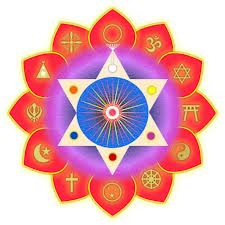

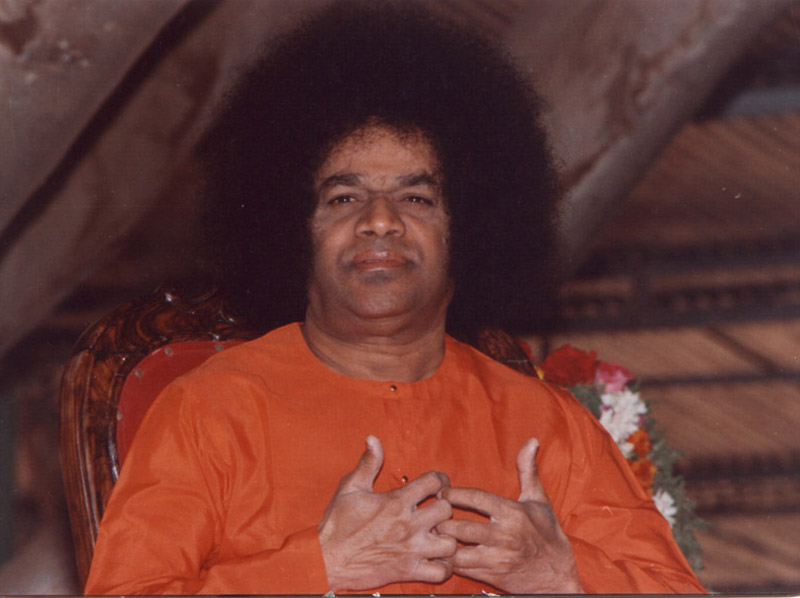
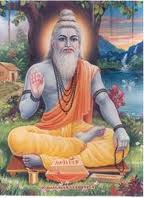.jpg)



.jpg)
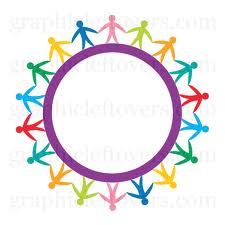.jpg)





.jpg)




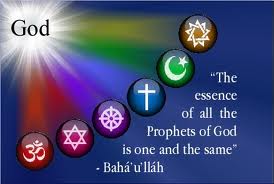.jpg)